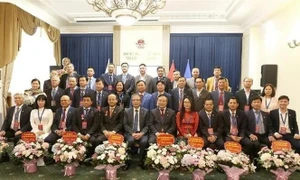The declaration was launched at the United Nations Climate Change Conference (COP26) in November 2021. A total of 143 nations signed the declaration, accounting for over 90% of the world’s forest coverage. This effort aimed to “halt and reverse forest loss and land degradation by 2030 while delivering sustainable development and promoting inclusive rural transformation.”
The national plan by 2030 is intended to realise goals of sustainable agricultural and rural development, greenhouse gas emission reduction, climate change response, biodiversity conservation, sustainable forest management, and transition to a green economy and a circular economy.
Under the plan, the area of downgrading natural forests restored and upgraded is set at 10% by 2025, and 20% by 2030. Meanwhile, the area certified for sustainable forest management is expected to reach 0.5 million hectares by 2025, and 1 million hectares by 2030.
Vietnam will perfect mechanisms and policies to promote sustainability in agro-forestry production and consumption, and raise resilience of forest land to climate change.
Efforts will be made to advance rural livelihoods by empowering the community, consolidating the land management system, and improving the multi-purpose management of forests.
 Over the past years, competent forces, localities, and residents have worked hard to promote forestation, forest protection and biodiversity conservation. (Photo: VNA)
Over the past years, competent forces, localities, and residents have worked hard to promote forestation, forest protection and biodiversity conservation. (Photo: VNA)
The plan also aims to promote the access to and efficient use of domestic and international financial resources, as well as the public-private partnership in agro-forestry production, and sustainable forest management, and support local residents, especially ethnic minority groups.
The Vietnam Administration of Forestry (VNFOREST) under the Ministry of Agriculture and Rural Development noted that to improve forest quality, it is a must to review the area of forestry land and forest for the harmonious forest allocation.
The agency also asked localities to build a list of high-yielding forest tree species that are suitable with local soil conditions and satisfy market requirements, while optimising technologies in forestation.
Statistics showed that Vietnam was home to over 14.7 million hectares of forests last year, and its forest coverage reached 42.02%.
Over the past years, competent forces, localities, and residents have worked hard to promote forestation, forest protection and biodiversity conservation, reaping significant achievements, with the Central Highlands province of Dak Lak, the northern province of Dien Bien, and the southern province of Ca Mau as role models in this regard./.























